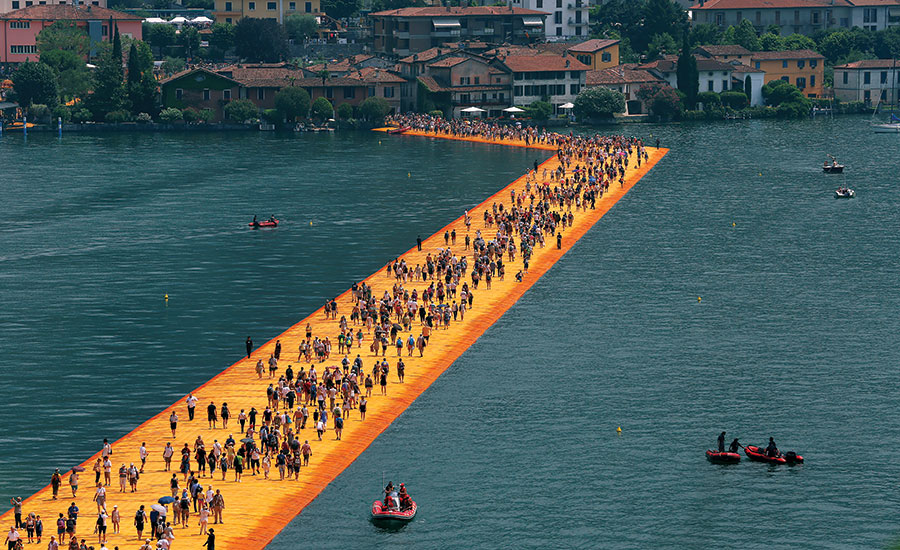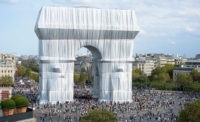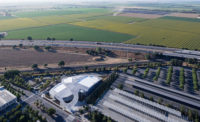By the time The Floating Piers on Lake Iseo closed to the public on July 3, an estimated 1.5 million people had walked on water. The spectacular project was first conceived by artists Christo and Jeanne-Claude as wrapped inflated piers for Rio de la Plata in Buenos Aires and for Tokyo Bay, in 1970 and 1996 respectively. While those were never realized, Christo revisited the idea following Jeanne-Claude’s death in 2009 and found a receptive audience in the small communities around Iseo, a little-known lake in northern Italy. Composed of 220,000 high-density polyethylene cubes, about the size of milk crates, bolted together to make 328-foot-long sections, the walkway was sheathed in a million square feet of nylon polyamide fabric—the same saffron color of the husband-and-wife team’s The Gates in New York’s Central Park (2005). The Floating Piers extended nearly two miles, wrapping around the small private island of San Paolo and connecting to the larger island of Monte Isola as well as to the mainland. Ropes fastened to 190 concrete anchors on the lake floor held the cubes in place with just enough give to appreciably move with the water. But more than a technological achievement, The Floating Piers was a social phenomenon, attracting almost three times the visitors anticipated over its 16-day run, and uniting a wide spectrum of the public on a golden 52-foot-wide pathway. During divisive times, leave it to a work of art to bring people together.
The Floating Piers by Christo and Jeanne-Claude
Lake Iseo, Italy

The Floating Piers by Christo and Jeanne-Claude in Lake Iseo, Italy
Photo © Stefano Rellandini





